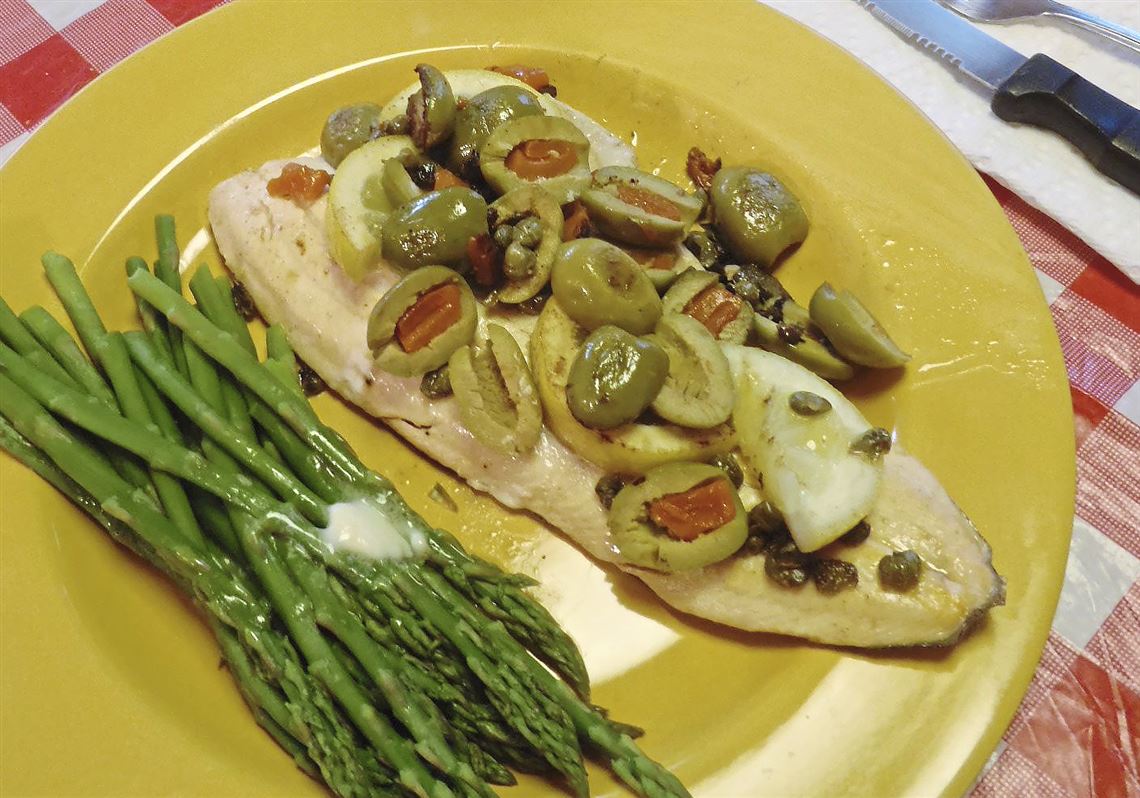Fishing is fun, but trout fishing is special. As a catch-and-release fly fisherman I see the rod, reel, line and fly as an extension of me. Sometimes I pick the right fly at the right time, cast it to the right spot and play it just right. When the trout takes the fly, mistaking my hand-tied extension for a native bug or minnow, it thinks I belong there as part of this little ecosystem. I don’t keep the trout so I’m not the predator, I’m the prey. Nowhere else in my life do I feel the same sense of acceptance in a beautiful little cohesive community that thinks I belong.
It’s been awhile since I’ve killed a trout, but sometimes at a restaurant or a friend’s dinner table I don’t mind being the predator. I’ve eaten enough trout to know before the first bite if it was a wild fish born in the waters from which it was taken, or a hatchery-raised trout stocked for the enjoyment of recreational anglers or harvested by commercial aquaculturists.
The annual Post-Gazette Trout Photo Contest is now open!
Learn more about the contest and submit a photo of your catch.
Most trout caught when the statewide season opens Saturday, and all supermarket and restaurant trout, started life in a hatchery where they were fed pressed nutrition pellets. The pellets encourage fast growth to an optimal 8- to 11-inch stocking size. The state Fish and Boat Commission stocks some 3.5 million hatchery-raised brook, brown and rainbow trout each year in a program financed solely through angler dollars. Independent groups stock additional trout.
“The flesh of freshly caught hatchery trout, not long after the departure of the hatchery truck, is typically white since they have been fed pelleted feed for 1½ years,” said John Arway, executive director of the state Fish and Boat Commission.
Now a fisheries biologist, Mr. Arway grew up in the Irwin area of Westmoreland County and remembers bringing freshly caught trout to his family’s dinner table.
“Hatchery trout can be smoked after brining them for a day or two and are great appetizers, as are any smoked fish,” he said. “They are also good filleted and panfried after a dusting of seasoned flour, egg-milk wash and dipped in your favorite breading. Same recipe I use for panfish, which are my preferred panfried fish. Since I usually have sufficient numbers of panfish fillets in stock in the freezer, I don’t keep many stocked trout.”
It’s likely that most Pennsylvania trout anglers have never tasted the robust pink to red flesh of a wild trout. Primarily insect eaters, wild trout feed mostly on protein-packed larva hiding under submerged stones, and bugs in emerging subadult and flying adult forms. Unlike hatchery trout, their wild cousins are extremely sensitive to water quality, so much so that the confirmation of reproducing populations of native brook trout sets a legal standard of high water quality that triggers additional state and federal protections of the watershed. On the plate, their clean, well-nourished, well-exercized flesh is firm and hearty.
Wild indigenous brook trout can be caught in the high limestone streams of Central Pennsylvania and some lowland tributaries. Feral brown and rainbow trout, originally imported from Europe and the American West Coast respectively, are born wild and have eaten only wild food throughout their lives. They and their stocked cousins of the same species respond the same on the stove.
The catch-and-release conservation ethic is common among trout anglers.
“I don't keep many trout these days,” said Dale Fogg, president of the Penn’s Woods West Chapter of Trout Unlimited, a coldwater conservation group. “When I am in Maine, and fishing a healthy wild brook trout population, I will keep a couple for the pan.”
Mr. Fogg fries bacon, removes it from the pan and keeps the bacon grease. He drops lemon slices into the cavity of a field-dressed trout and sprinkles on a pinch of salt and pepper.
“I fry the whole trout in the bacon grease until the outside is slightly crispy, then flip and do the other side the same,” he said. “The wild trout have pink meat, and are firmer than their white-flesh counterparts. Trout cooked this way are fantastic, even better when cooked over a campfire in a cast-iron skillet.”
Mr. Arway insists on the skillet.
“Seven to 8-inch brook trout are best when they are placed in a cast-iron skillet of sizzling oil — we used lard when I was younger — on a camp fire at streamside,” he said. “Adding a few ramps or leeks to the oil adds a flavor unlike any other. They are cooked to perfection when the caudal fin [or tail] curls and meets the head. They go best with scrambled eggs and biscuits for breakfast. Larger wild trout ... are best when stuffed with crabmeat, basted in butter on a grill or wrapped in tin foil with butter over a campfire.”
John Hayes: 412-263-1991 or jhayes@post-gazette.com.
Trout Martini
PG tested
Appearing upscale on the plate, this dinner party hit works just as well for wood-fire camp cooking.
1 trout, field- dressed or filleted
⅔ cup dry vermouth
4 to 6 Spanish queen pimento-stuffed olives
2 tablespoons capers
1 lemon, sliced in ¼-inch
2 dabs butter
½ lemon
Marinate trout in vermouth overnight, or at least 4 to 5 hours, in the refrigerator.
Remove fish and set aside. Pour vermouth marinade into a saucepan or grill, and simmer over medium-low heat. The alcohol will evaporate, leaving only the essence of vermouth.
Slice big, beefy olives into horizontal thirds. Simmer olives, capers and lemon in marinade until olives start to soften and lemon slices begin to brown.
For a field-dressed trout, wild or stocked, splay the sides and poach meat side down for about 3 minutes until it flakes easily with a fork. Melt a dab of butter over each side.
For a commercial fillet, poach meat side down, then flip.
Scoop olives, capers and lemon into the trout's body cavity and poach each side skin down for about 3 minutes, or scoop cooked ingredients on top of each side of the fillet, letting flavors run into the meat while it’s poaching.
Serve with a rice or vegetable side. Goes well with a white wine or, you guessed it, a dry martini.
Serves 1.
— John Hayes
First Published: April 11, 2018, 12:30 p.m.















